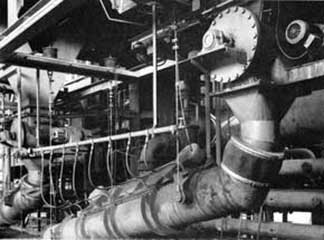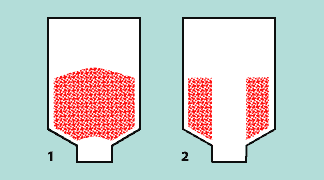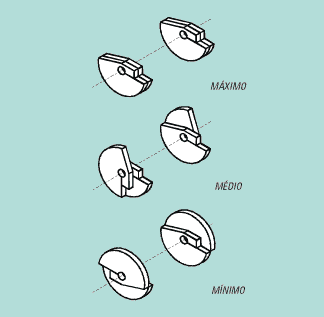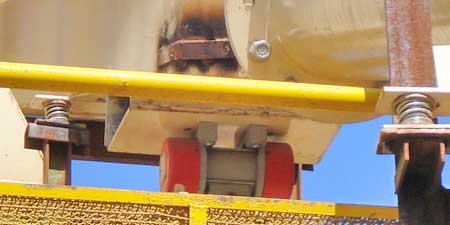Presentation
The choice of a VIMOT vibrator to provide good material flow in silos, bins and conduits depends on a number of factors: The size and shape of the silo, type of construction, thickness of the plates, type and granulometry of the material as well as its percentage moisture.
Primarily, however, the vibrator is chosen based on the wall thickness and volume of the silo. More details are contained in the section Choice.
Rough grained and dry materials offer the least resistance to vibratory flow and are therefore easily handled.
Fine-grained or wet materials require more concentrated effort to produce the desired flow. The two main problems in these materials, bridging and chimney formation, are eliminated by using VIMOT motovibrators.
Bridging is a compaction of material within the silo or bin that extends from wall to wall and is broken up by vibratory action. Observe fig. 1.
In fig. 2 we see the chimneys, resulting from the accumulation of material next to the walls, with the flow occurring only in a certain area, located above the discharge mouth. The VIMOT motovibrator destroys the resistance of this accumulation, allowing free flow.
Generally speaking, the best placement of the vibrator to optimize the material discharge flow is at 1/4 or 1/3 the length of the outlet cone of the silo or bin.
It is recommended that the vibrators be mounted using rigid welded or screw-on bases. This also applies to the ducts.
It is possible to adjust the vibrators so as to change the vibratory impact by changing the position of the inertial weights attached to the shaft ends of the vibrators. To do this, observe the different possible positions in the adjacent figure.
It should be remembered that the vibrators can be mounted in any position, and that they have oversized vibration-proof bearings that are kept in play by self-adjusting clearances.
They are type TENV with protection IP-66.





